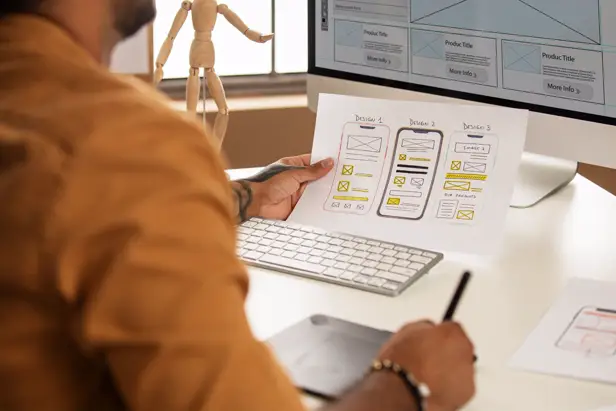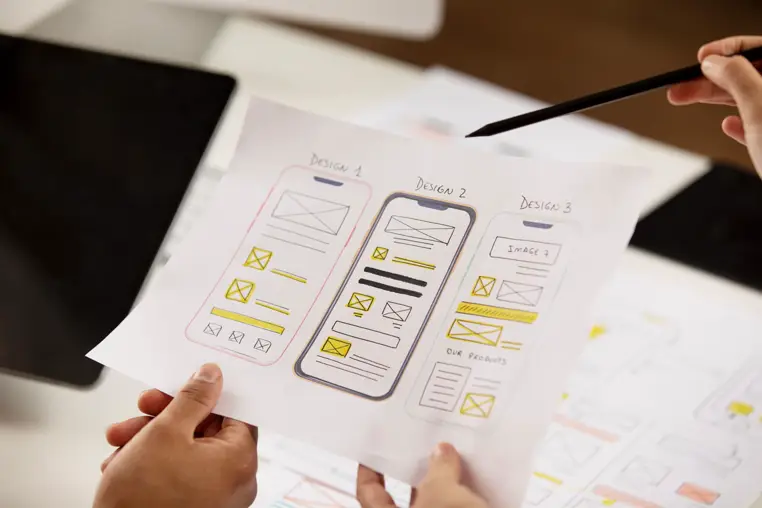What are the Differences Between UI, UX, and UE?
The role of designers in the internet industry is becoming increasingly important. For international students, especially those studying design, design-related work in the internet sector is a hot topic for job seekers.
It allows you to utilize your design knowledge while capitalizing on the rapid growth of the internet industry, offering promising career prospects. However, during job searches, you will come across various terms such as UI designer, UX designer, UE designer, interaction designer, visual designer, and more, all of which may seem similar in terms of job responsibilities, but what exactly are the differences between these roles?
In reality, these positions, while somewhat complex, have subtle differences in their job focus. Today, let's explore the differences between UI, UX, and UE with Aniday.
Definitions

-
UI: UI stands for User Interface.
According to Wikipedia, UI is the interface that allows users to interact with a system and encompasses human-computer interaction and graphical user interfaces. In the context of a car, elements like the steering wheel and dashboard are part of the user interface.
-
UE/UX: Both UE and UX are abbreviations for User Experience and have the same meaning.
ISO 9241-210 standard defines user experience as the cognitive perception and response of individuals concerning a product, system, or service they use or expect to use. It refers to the subjective feelings individuals have during the entire process of using a product before, during, and after usage. UX designers study and evaluate the user experience of a system, focusing on factors like usability, value representation, practicality, efficiency, etc.
Specific Comparison
Although both UI and UX designers work in the field of design and their responsibilities overlap to some extent, they require extensive collaboration to achieve user-centered design (UCD). However, there are significant differences between UI, UX, and UE designers in their specialized areas.
User Experience

In a narrow sense, UX/UE, or user experience designers, mainly focus on solving the interaction between users and the user interface. A skilled user experience designer needs a deep understanding of interfaces, interactions, and implementation technologies. The workflow for user experience includes requirement exploration, product design, interface design, prototype validation, and usability testing.
Working Closely with Operations
Additionally, user experience designers may need to work closely with their colleagues in operations to collect and analyze data and then incorporate user feedback into the iterative design of the product. User experience designers essentially play a vital role that connects product managers and product operations.
User Interface Design

On the other hand, UI design places greater emphasis on visual design compared to UX. UI designers' responsibilities primarily include setting interface styles based on the aesthetic habits and trends of the target users.
They also focus on artistic aspects like detailed artwork, product character representation, and emotional expression. In their work, they design various visual elements such as color schemes, fonts, buttons, and more.
Furthermore, they may participate in setting design standards for products and brand campaign operations. UI design can be seen as the graphical and visual part of UX design, but it is more specialized and suits international students who have a strong passion for pure design and a strong sense of aesthetics.
In Summary
In summary, the relationship between UX and UI can be described as follows: UX is a design concept that places the user at the center and encompasses several areas and disciplines. UI visualizes the information within UX and establishes effective communication with users through visual elements.
The two closely collaborate to create products with a superior user experience. In some small companies, the roles of UI and UX designers may be combined into one designer, while in slightly larger companies, more distinct roles as UI designers and UX designers may be defined.
Nevertheless, collaboration and communication between the two roles are frequent. A successful product requires a balanced consideration of both UI and UX components, and neither can be overlooked. I hope through this blog post you have gain a clearer understanding of the differences between UI, UX, and UE.
Aniday's HR Services
Headhunting Service
Find and recruit quality candidates in just 1 week! Supported by 40,000 experienced headhunters in IT, Finance, Marketing… capable of recruiting in any region.
Headhunting Service ➔Employer of Record (EOR) Service
On behalf of your business, we recruit employees and handle payroll without the need to establish a company in markets such as Vietnam, Singapore, Malaysia, India, Indonesia…
Employer of Record (EOR) Service ➔